Representation of some finite sets for the relation \(\trianglelefteq\)
-
\(\left\{ 1,2,3,4,5,6\right\} \)
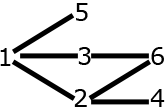
This set doesn't have a maximum for \(\trianglelefteq\), although \(6\) is a maximum for the usual order.
- \(\left\{ 2,3,5,6,10,30\right\} \)

30 is the maximum of this set for \(\trianglelefteq\) and for the usual order.
-
\(\left\{ 2,4,6,8,12,16\right\} \)

This set doesn't have a maximum for \(\trianglelefteq\) (although \(16\) is a maximum for the usual order).
What we are interested in is the case of the set of divisors of a number or of the set of common divisors of two numbers.
-
divisors of \(12\): \(\left\{ 1,2,3,4,6,12\right\} \)
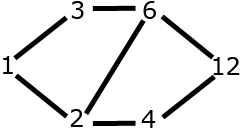
12 is the maximum for \(\trianglelefteq\)
-
divisors of \(36\): \(\left\{ 1,2,3,4,6,9,12,18,36\right\} \)
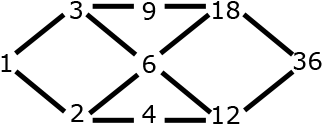
\(36\) is the maximum for \(\trianglelefteq\)
-
divisors of \(60\): \(\left\{ 1,2,3,4,5,6,10,12,15,20,30,60\right\} \)
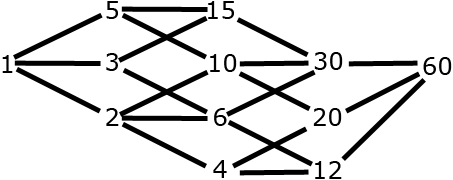
\(60\) is the maximum for \(\trianglelefteq\)
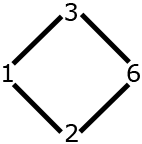
\(6\) is the maximum for \(\trianglelefteq\)
-
common divisors of \(50\) and \(30\): \(\left\{1,2,5,10\right\} \)
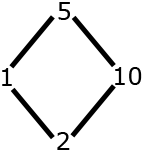
\(10\) is the maximum for \(\trianglelefteq\).